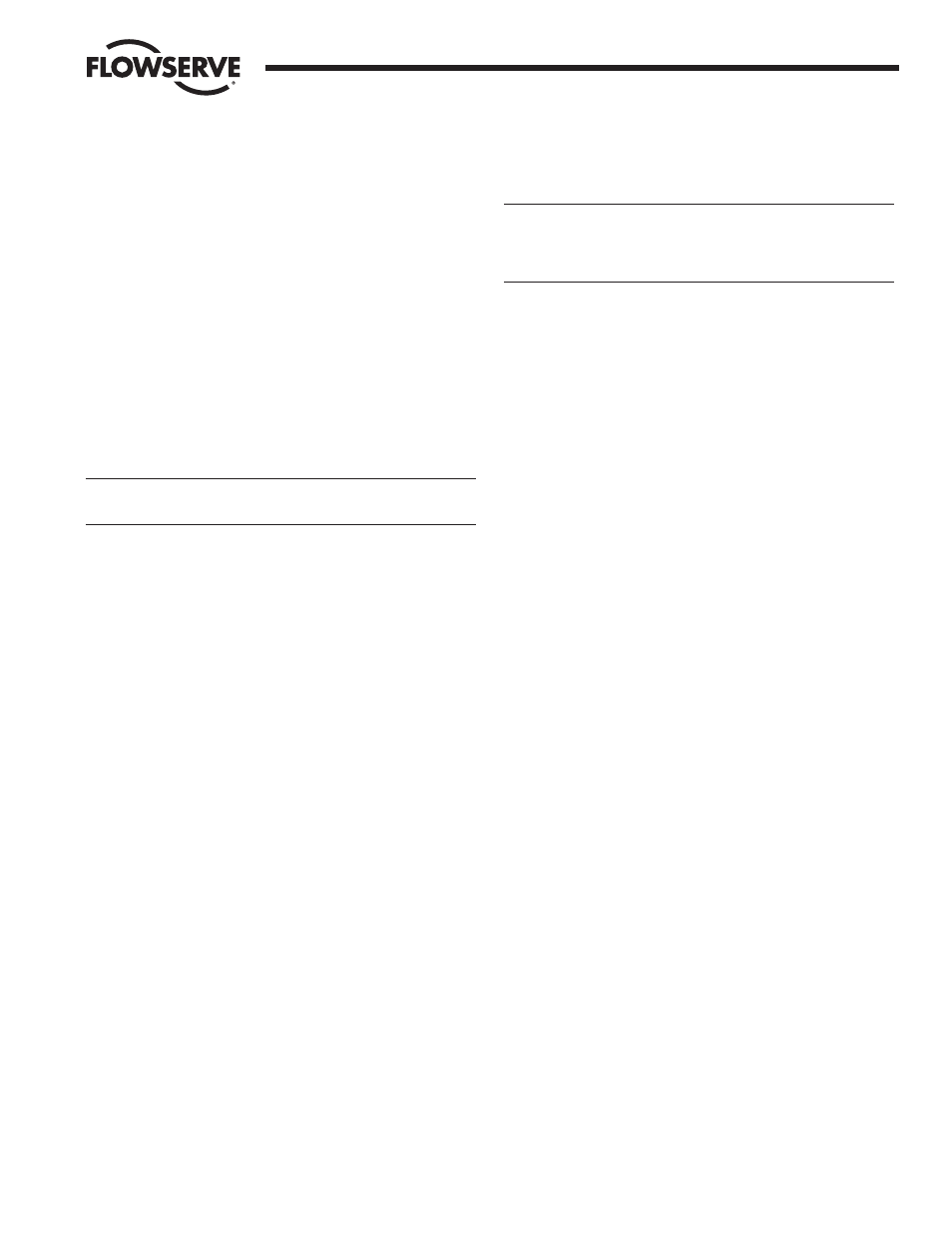Testing, Mccanna valves – Flowserve E-Series Unibody Flanged User Manual
Page 3

Flow Control Division
McCANNA Valves
IM002G
3
F. Temporarily thread the end adaptor (7) into the body (11) using a
hex nut or hexagonal bar (dimensions are given in TABLE 1), until
the internal shoulder bottoms metal-to-metal. The raised face of the
end adaptor (7) should be approximately
1
/
16
" above the flange
surface of the body (11) for later reference in step I. Remove the
end adaptor (7).
G. Place second seat (9) onto ball (8), centering carefully. Spherical
surface of seat must be positioned against the ball. Take care during
steps H and I to assure that the seat (9) slips into the mating portion
of the seat socket (15) or end adaptor (7).
H. Put end seal (12) or seat socket (15) and spacer seal (16) into
shoulder counterbore at flange in valve body (11).
I. Screw end adapter (7) back into body (11) using appropriate hex
nut or hexagonal bar (See TABLE 1) until end adaptor comes to a
complete stop (approximately
1
/
16
" from body flange), with the
marks from step F aligned. NOTE: On FIRE-GARD valves 3" and
larger only, wrap the end adaptor threads with graphite tape prior
to final insertion of end adaptor (7) into body (11).
a
WARNING: Valve must be properly secured to withstand the high
loads imposed during reassembly.
J. Install handle (1), and handle retainer nut (4).
5. Testing
Prior to placing the valve back into line position, test as follows:
a
WARNING: If not properly secured, the valve can separate from
the pressure source resulting in possible injury. Always join the
valve to companion flanges of same pressure rating as valve and
secure with a full set of flange bolts.
A. Secure valve to a test fixture by means of a mating flange with
full bolting and a suitable gasket. Orient valve so seat to be
tested is facing up.
B. Introduce 50 to 100 psig air into the end of the closed valve which
is attached to the fixture. Pour water into the upper port to cover
the ball and visually check for bubbles. If bubbles appear, pour the
water out cycle the valve several times and recheck. To check for
leakage in the other port, reverse the valve and repeat the process.
C. In the event of stem seal leakage, adjust as described under
Paragraph 2, “Stem Seal Adjustment”.
